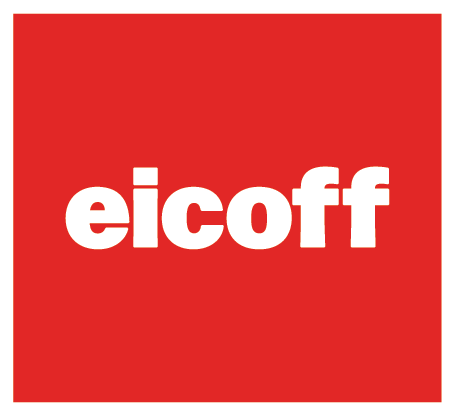Higher, Further, FAST-er: CTV Will Keep On Growing In 2025
Author: By Victoria McNally Source: AdExchanger
As the new year begins, expect CTV growth to continue blasting along with a vengeance.
GroupM forecasts that streaming TV will grow 12.9% in 2025 and overtake linear TV revenue by 2029.
Meanwhile, eMarketer predicts that nine streaming services will generate over $1 billion in ad revenue by 2026 (up from two in 2020), at which point CTV will account for one fifth of time spent with media per day by US adults.
It’s not surprising, then, that multiple of the CTV experts AdExchanger spoke with said they were “bullish” on the channel and believe that many of 2024’s biggest CTV trends will continue well into 2025.
Greater investment in FAST channels
The growth of free ad-supported television channels has been – well, fast.
One reason is because the viewing experience is similar to something people are already very familiar with: linear television. FAST is “almost making the old new again,” said Sarah Harms, VP of advertising marketing and measurement at Roku.
The trend is an obvious boon for publishers with existing content to repurpose, particularly if there’s enough of it to warrant a channel dedicated to a single IP. But nostalgia for bygone shows aside, FAST channels can also offer promotional opportunities for still-running series.
Michael Scott, VP and head of ad sales and operations at Samsung Ads, pointed to a recent initiative with Amazon to promote its Prime Video series, “The Lord of the Rings: The Rings of Power.” The week before the second season was set to air, Samsung TV+ launched a FAST channel that played the entire first season on a constant loop, which Scott said proved to be very successful.
For Samsung Ads in particular, advertisers buy spots based on the audience they’re targeting rather than against specific content. But, generally speaking, buyers and sellers “tend to see more transparency in terms of content, metadata and show-level information” for ad buys across most FAST channels, said Beau Ordemann, VP and head of advanced TV at Yahoo DSP.
More importantly, there’s no upper limit to the number of FAST channels that can exist – not physically, anyway, like there are with the literal cables used to transmit linear television.
“People have an insatiable desire to watch content,” said Scott, adding that, if anything, there aren’t enough FAST channels.
New CTV advertisers join the fold
With new channels (and the new ad inventory that goes along with it) comes the opportunity for new buyers to dip their toes into the CTV pool.
In an end-of-year blog post for Roku, Harms predicted that an estimated 20,000 new advertisers will come to streaming TV in 2025, many of which will launch their first-ever streaming TV campaigns – including small and midsize businesses.
Historically, SMBs and regional chains would have bought spots with local linear TV broadcasters based on geographic location rather than specific audience.
Several sellers and DSPs have already developed self-serve platforms to capture small business advertisers, including Roku and Paramount this year, Disney last year and NBCUniversal in 2022.
Unlike traditional TV ad buying, CTV and digital channels and self-service platforms enable “social API platform-like behavior to come into streaming,” Harms told AdExchanger.
But that familiarity with self-serve tools offered by the large ad platforms, mainly Meta and Google, may have a downside, said Gartner VP and analyst Eric Schmitt. SMBs are used to buying ads with exceptionally granular targeting capabilities, which can still be a challenge for some CTV sellers – particularly as the space continues to fragment.
“You’re already talking about small advertisers. They have limited budgets, they have limited resources,” said Schmitt. “Even with self-serve tools, you can’t expect them to log into 12 different places to buy TV.”
More biddable opportunities (to a point)
Regardless, as more advertisers embrace CTV, we’ll likely see an increase in programmatic buying opportunities.
CTV buying has already been trending toward programmatic over the past year, including a shift from programmatic guaranteed deals to biddable private marketplace deals, Ordemann said.
“There’s lots of high-level benefits,” he added, such as unified frequency management, which allows advertisers to reach more households with the same budget, avoid over-frequency and control overlap with linear TV.
But this continued growth begs a question: Is there a limit to how much CTV inventory will go programmatic?
Several sources noted that it’s unlikely CTV publishers will completely forgo the upfronts and the type of partnerships that are common in the traditional TV advertising world.
Unlike mobile or desktop display, which are both essentially fully programmatic by this point, the larger partnerships and agreements that go into producing TV shows make programmatic monetization a little trickier, said Scott.
Similarly, upfront buying may be “strained” for a while as programmatic continues growing, Schmitt theorized, but bigger publishers will still want to “control big pieces of the inventory” and sell it on a guaranteed basis.
In the meantime, programmatic buying as a practice will also need to become more accountable as it matures, Harms said, including better infrastructure, measurement and expertise from those in the space.
“Programmatic isn’t really a fad anymore,” she said. “It’s table stakes for how we execute on standard media assets.”


